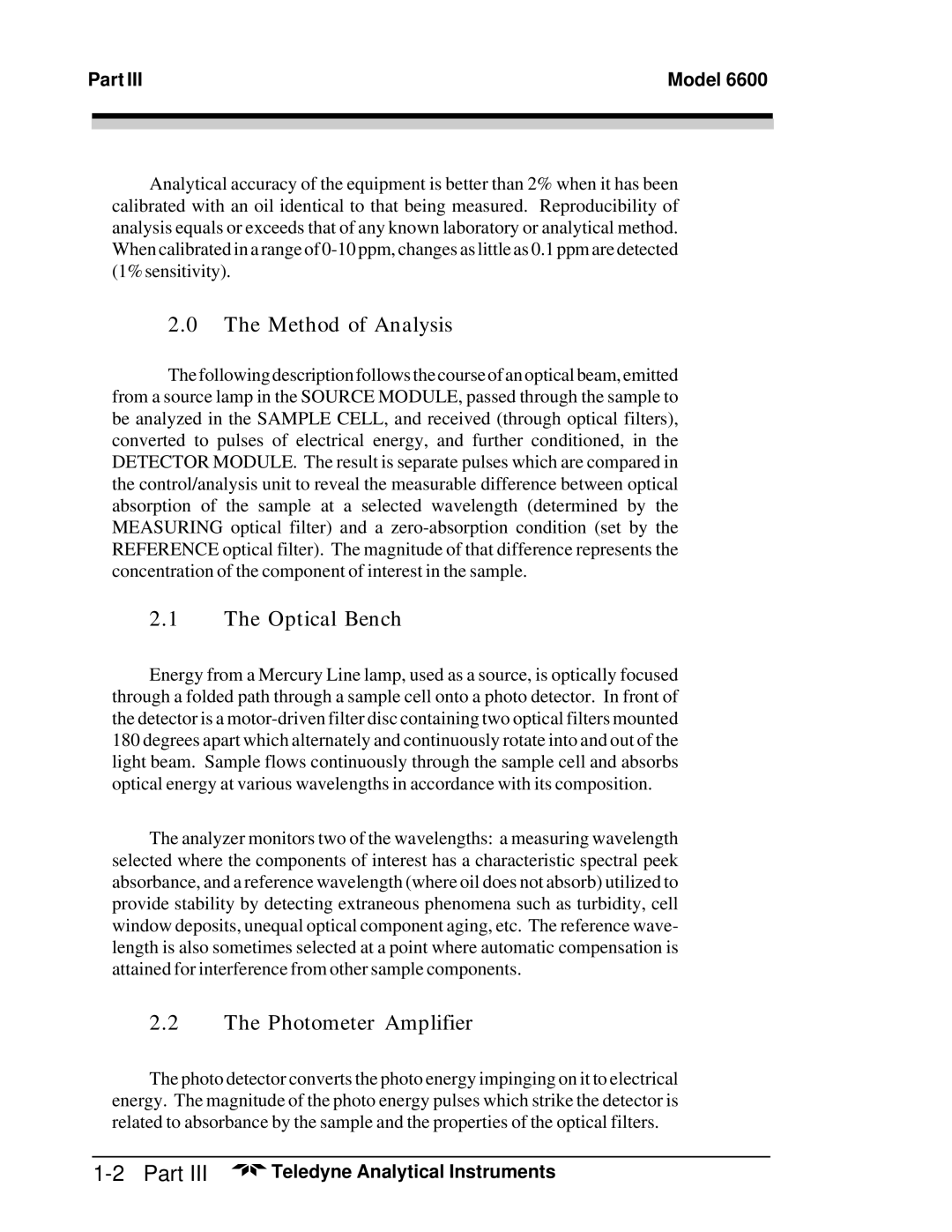Part III | Model 6600 | |
|
|
|
|
|
|
|
|
|
Analytical accuracy of the equipment is better than 2% when it has been calibrated with an oil identical to that being measured. Reproducibility of analysis equals or exceeds that of any known laboratory or analytical method. When calibrated in a range of
2.0The Method of Analysis
The following description follows the course of an optical beam, emitted from a source lamp in the SOURCE MODULE, passed through the sample to be analyzed in the SAMPLE CELL, and received (through optical filters), converted to pulses of electrical energy, and further conditioned, in the DETECTOR MODULE. The result is separate pulses which are compared in the control/analysis unit to reveal the measurable difference between optical absorption of the sample at a selected wavelength (determined by the MEASURING optical filter) and a
2.1The Optical Bench
Energy from a Mercury Line lamp, used as a source, is optically focused through a folded path through a sample cell onto a photo detector. In front of the detector is a
The analyzer monitors two of the wavelengths: a measuring wavelength selected where the components of interest has a characteristic spectral peek absorbance, and a reference wavelength (where oil does not absorb) utilized to provide stability by detecting extraneous phenomena such as turbidity, cell window deposits, unequal optical component aging, etc. The reference wave- length is also sometimes selected at a point where automatic compensation is attained for interference from other sample components.
2.2The Photometer Amplifier
The photo detector converts the photo energy impinging on it to electrical energy. The magnitude of the photo energy pulses which strike the detector is related to absorbance by the sample and the properties of the optical filters.
| Teledyne Analytical Instruments |
